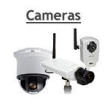
|
|
|
iCatcher Help
Learn how to set up and use iCatcher's features to their full potential. read more... File download areaDownload all the iCatcher software products, including legacy versions. read more... Wildlife picture galleryi-Catcher Wildlife captures fantastic scenes from nature. Have a look at some of the best. read more... Capture equipmentFind out about suitable equipment for use with iCatcher, from cameras to lighting, and more. read more... |
Configuring overlays The Overlays tab allows you to stamp each frame with information such as the date and time and to mark where the motion is occurring Overlay TextEnabling the Enable text overlay option will allow you to enter text that will be stamped on each frame from the camera. This text can contain Macros which include dynamic information such as the feed name. Please see the Macros help for more information. The Text position box allows you to specify where on the image the text is placed. You can also select the colour of the text, and the background colour. Motion highlightingMotion Highlighting allows you to select the style of cross hair used to identify motion in the frame and the colour. You can also choose to highlight those parts of the images that have moved, and what colour to highlight them with. When you are using ICE motion detection, you also have the option to show the clump information on the image and to outline each clump using one of several methods:
Please note that if you are using a JPEG based image source and "Save overlay information on the image" in the Recording settings is disabled, then the overlays are not guaranteed to be saved on the final footage. |
